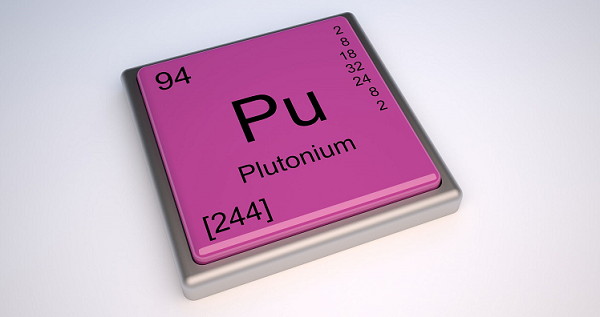
- Chemistry - Home
- Chemistry - Introduction
- Chemistry - Branches
- Chemistry - Radioactivity
- Chemistry - Nuclear Energy
- Chemistry - Metals
- Chemistry - Metallurgy
- Chemistry - Sodium
- Chemistry - Calcium
- Chemistry - Aluminum
- Chemistry - Magnesium
- Chemistry - Maganese
- Chemistry - Iron
- Chemistry - Copper
- Chemistry - Silver
- Chemistry - Gold
- Chemistry - Platinum
- Chemistry - Zinc
- Chemistry - Mercury
- Chemistry - Plutonium
- Chemistry - Uranium
- Chemistry - Lead
- Chemistry - Thorium
- Chemistry - Hydrogen
- Chemistry - Helium
- Chemistry - Oxygen
- Chemistry - Carbon
- Chemistry - Nitrogen
- Chemistry - Chemical Law
- Chemistry - Discovery of Elements
- Elements With Their Valence
- Elements With Their Atomic Number
- Chemistry - Nobel Prize
Chemistry - Plutonium
Introduction
Plutonium is basically an actinide metal and it appears like silvery-gray.
The element, which atomic number is ranging between 89 and 103, is known as actinide element.
The symbol of plutonium is Pu and atomic number is 94.

Plutonium normally possesses six allotropes.
Plutonium is named after Pluto.
Plutonium was first discovered in 1940, by a group of scientists namely Glenn T. Seaborg, Joseph W. Kennedy, Edwin M. McMillan and Arthur C. Wahl.
Salient Features of Plutonium
Plutonium is a radioactive chemical element.
Plutonium when exposed to air, it gets tarnished and when it oxidized, it forms a dull coating.
Plutonium reacts with many elements including halogens, nitrogen, carbon, silicon, and hydrogen.
Because of fission process, neutrons get released and convert uranium-238 nuclei into plutonium-239.
Plutonium-239 and plutonium-241 both are fissile, and hence, they can sustain a nuclear chain reaction. It is very well applicable in nuclear weapons and nuclear reactors.
The melting point of plutonium is 640 0C and its boiling point is 3,228 0C.
The release of helium nucleus (a high-energy) is the most common form of radioactive decay for the plutonium.
Occurrence of Plutonium
The plutonium naturally found only in trace amounts within the uranium deposits.
Plutonium is also extracted by burning the uranium (while developing nuclear energy).
Alloys of Plutonium
-
Following are the major alloys of plutonium −
Plutoniumgallium is one of the important alloys of plutonium as well as of gallium.
Plutoniumgallium is used in the nuclear weapon pits.
Plutoniumgallium has the property of very low thermal expansion.
-
Some other alloys of plutonium are −
Plutoniumaluminum
Plutoniumgalliumcobalt
Plutoniumzirconium
Plutoniumcerium
Plutoniumuranium
Plutoniumuraniumtitanium
Thoriumuraniumplutonium
Compounds of Plutonium
Plutonium (IV) oxide - PuO2
Plutonium (III) chloride - PuCl3
Plutonium tetrafluoride - PuF4
Uses of Plutonium
The isotope plutonium-239 is one of the significant elements in developing the nuclear weapons.
Plutonium is used as a fuel in the nuclear power plants.